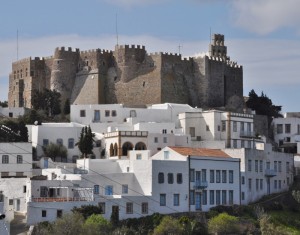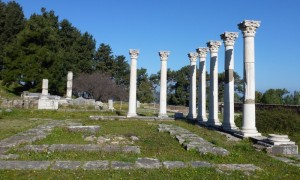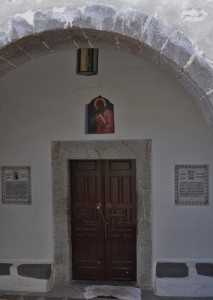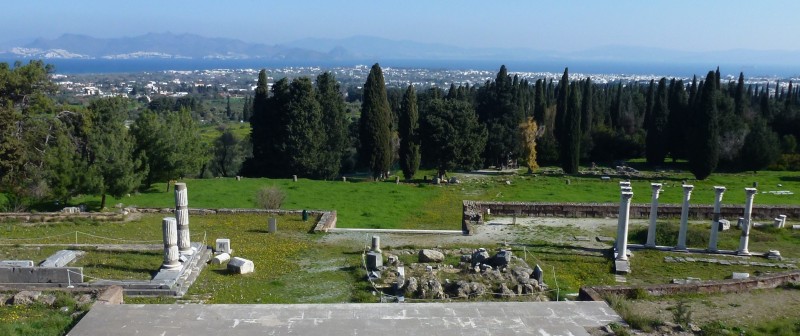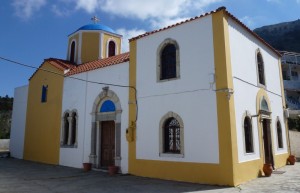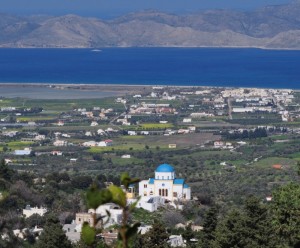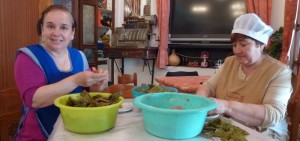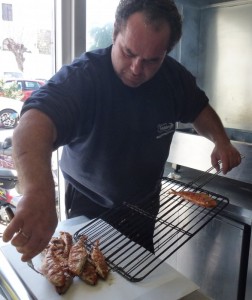Piraeus-Patmos-Kos February 25 – March 1
Feb 25 Monday: Tel Aviv – Athens – Piraeus
I had a pleasant flight and was back in Athens by 8:30pm. At 9:35pm Bus X96 departed for Piraeus. By 11pm, I found a small hotel opposite the port ready for my 7-day Greek island hopping.
Feb 26 Tuesday: Piraeus – Patmos
My ferry did not leave till 3pm. I therefore had the whole morning to take a look at Greece’s largest port. The metro line from Athens terminates next to the port. I was surprised to find a fairly elegant and vibrant city with lots of up-market boutique shops and nice restaurants and bars in the city centre and around the Zea Marina and the fishing port at Mikrolimano. It is amazing to see dozens of nice shoe shops. The designer shops selling candles, chocolate, coffee, kitchenware and gift shops are impressive too.
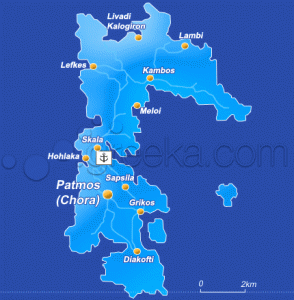 After a quick lunch, I took my luggage from the hotel and arrived at the ferry terminal at 2pm using the free shuttle bus service. The Blue Stars Ferry for the Dodecanese set off on schedule at 3pm and the first stop was Patmos, 158 nautical miles from Piraeus.
After a quick lunch, I took my luggage from the hotel and arrived at the ferry terminal at 2pm using the free shuttle bus service. The Blue Stars Ferry for the Dodecanese set off on schedule at 3pm and the first stop was Patmos, 158 nautical miles from Piraeus.
Time on the ferry passed quickly as I worked on my travel notes and photos. My nightmare however started when I landed at the port in Skala at 12:30 am and could not find Hotel Xienios Zeus. Accordingly to George of the Academy Travel in Athens, I could see it from the port. Locals told me the hotel is about one kilometer away. As all taxis had gone, I had to walk.
When I passed the Chris Hotel where there were still people in the bar, I went in to seek help. They called the hotel but there was no answer. I continued to walk but the light is dim. I could not find any directional sign. When I saw a car coming, I stopped it to seek assistance. The couple was most helpful and the lady called the number again without success. Her husband asked me to jump in his car and drove me to the hotel. We could not find anyone in the hotel which has no name plate on the door. Eventually, he took me to Hotel Effie nearby where I took a room for €30. It was 1:30am.
Despite the darkness and disappointment, I felt safe and was appreciated all the help given to me by the locals who must be amused to see a strange old Chinese lady walking around at 1am with a suitcase! It is quite an experience!
February 27 Wednesday: Patmos
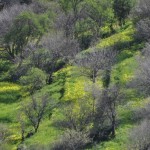 |
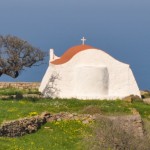 |
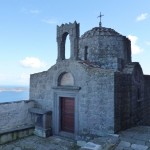 |
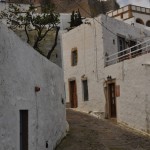 |
Patmos measuring 34km wide and 25km long was inhabited in prehistoric times by Kares, later by the Dorians and subsequently by the Ionians. Patmos fell in decline under the Romans who used the island as a place for exile. In 95AD, St John was exiled to Patmos by Emperor Domitian. Changes arrived with the arrival of Monk Christodoulos of Latrinos and the construction of the Holy Monastery of St John the Theologian. The first library was established in the Monastery and by 13th century, houses were built close to the monastery.
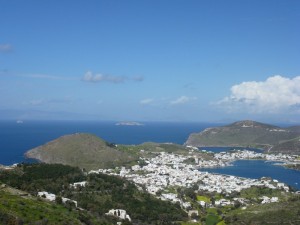 Following the fall of Constantinople to the Turks in 1453, the settlement of “Allotina” was founded with houses adjoining the Monastery walls to protect their inhabitants from pirates during the period of Venetian-Turkish wars (1645-1670). Patmos flourished as traders with their boats came all over Europe. By 1630, it had 4000 inhabitants, 93 monks and 100 churches. In the 18th century, the Patmian School “The common school of the nation” was founded to prepare teachers to go to different parts of the nation. In 1713, Makarios Kalogeras from Patmos returning from Constantinople created the Cave of Apocalypse School.
Following the fall of Constantinople to the Turks in 1453, the settlement of “Allotina” was founded with houses adjoining the Monastery walls to protect their inhabitants from pirates during the period of Venetian-Turkish wars (1645-1670). Patmos flourished as traders with their boats came all over Europe. By 1630, it had 4000 inhabitants, 93 monks and 100 churches. In the 18th century, the Patmian School “The common school of the nation” was founded to prepare teachers to go to different parts of the nation. In 1713, Makarios Kalogeras from Patmos returning from Constantinople created the Cave of Apocalypse School.
Patmians played their part in the liberation movement against the Turks. Patmos remained under the Turkish domination till 1912 when it was captured by the Italians during the Italian-Turkish War. It only became part of the Hellenic state in 1947. Today, Patmos has some 3000 inhabitants living in Hora, Skala, Kampos and Grikos. It boasts a World Heritage Site comprising the historic centre Chora, the Abbey of St John of Theologian and the Cavern of Revelation. It is proud to be the only place on earth outside Jerusalem to have the religious “Niptira” ceremony representing Last Supper and a religious music festival in September.
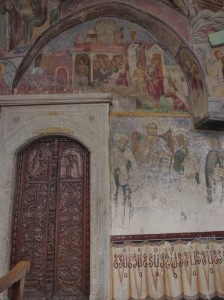 |
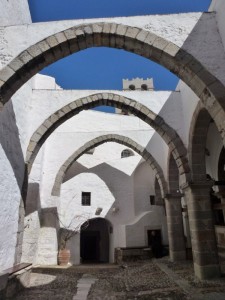 |
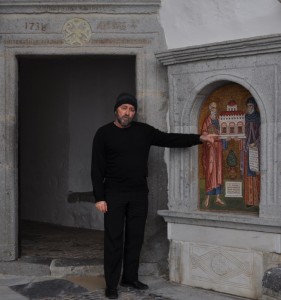 |
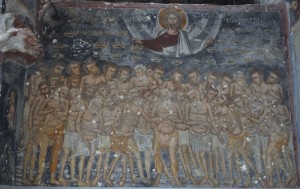 |
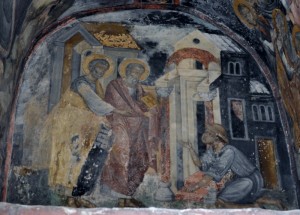 |
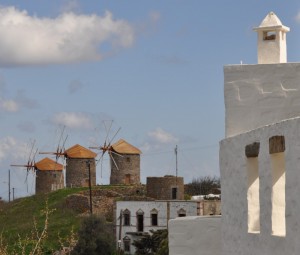 |
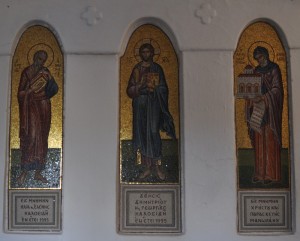 |
I had a great day in Patmos. As I missed the 9:30am bus to Chora, I decided to walk. The 2-km hike takes me through beautiful wooden areas. The fortified and fortress-like monastery with 15m-high walls perching on top of a hill is imposing. First built in 1088 by St Christodoulos, the present structure was built around 19th century. The monastery has ten chapels and a dozen monks are living there. A layman opened the door and showed me the church which is decorated with beautiful icons and murals. But the museum is closed in the winter. I walked to see the three photogenic windmills owned by the Monastery. The large one is used for generating power while the other two are flour mills.
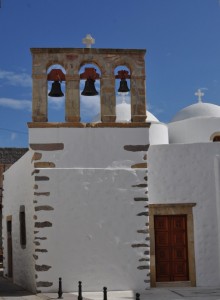 |
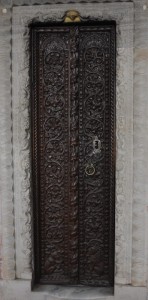 |
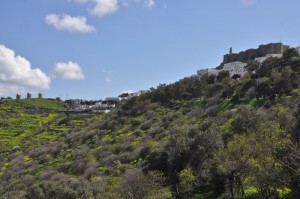 |
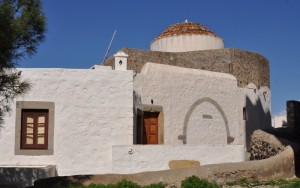 |
The downhill hike was blissful. I followed the stony path and reached the Cavern where St John stayed during his exile on the island. The cave in which he lived, heard the voice of God and wrote the Apocalypse is now known as the “Holy Cave”. The cave church is simple and spiritual. I note a lot of renovation and construction works going on and wonder whether accommodation will be provided for pilgrims and visitors in future.
I was back in Skala before 1pm. As the last bus departing of Kampos (5.5km from Skala) would leave at 2:10pm, I had time for lunch. The bus driver recommended Restaurant Loukas and I had a big plate of fresh and delicious fried fish for €6. At first I planned to take the bus to Kampos (€1.5 one way) and walked back. As it started to rain, I decided to stay on the bus and return to Skala without even getting off the bus.
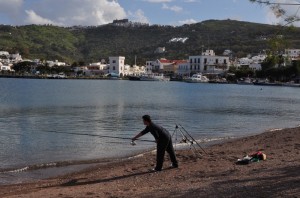 |
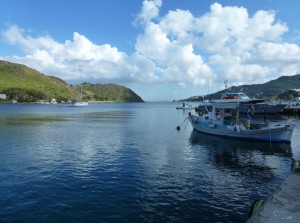 |
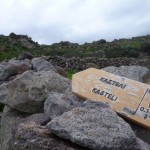 |
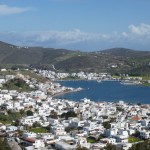 |
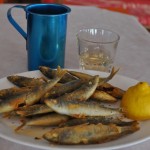 |
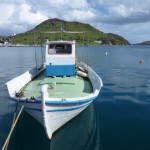 |
I was back in the hotel before 3pm. When I saw the blue sky again, I decided to set off for the Kasteli located on the hillside above my hotel. The walls in the area date back to the 6th and 4th centuries BC. The path is not well marked. I did not try to reach the top to look for evidence of the acropolis as I am not comfortable with rock climbing. Dark clouds gathered again and I was lucky to reach the hotel before arrival of heavy rain. Around 7pm, there was a big hailstorm! I went to bed before 8pm as I had a ferry to catch.
February 28 Thursday: Patmos – Kos
I left the hotel at 2:30am. It was a perfect night with a full moon, clear sky, fresh air and warm sea breeze. I had a cappuccino at the café by the port for €3: it is the strangest cappuccino I ever had with a strong Greek coffee aroma. The ferry departed after 3:30am and I watched a gorgeous sunrise before landing in Kos at 7:30am.
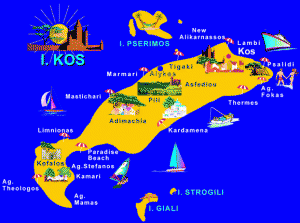 |
Kos, the island of Hippocrates or the garden of the Aegean, is the third biggest island of the Dodecanese measuring roughly 40km long by 4km wide. It has an area of 287 square kilometres and a population of 33000.
Kos is flat with two low mountains, Dikaio (875m) and Simpatro, a large salt pan and many beautiful beaches. Kos relies heavily on tourism with the majority of the residents involving in the tourist industry; a smaller percentage in agriculture; livestock-farming and fishery. It is only 4 nautical miles from Bodrum, Turkey and takes 15 minutes on hydrofoil (€10 for a day return ticket).
My hotel (Veroniki) is close to the port. But it is old, dim and not appealing at all. I spotted a better hotel with a roof-top garden (Astron Hotel) by the port which only charged €28 for a single with breakfast for low season a night. I was once again let down by the agent in Athens.
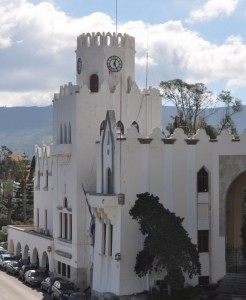 |
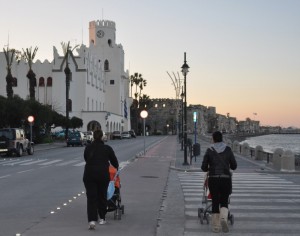 |
I spent the morning walking the old city behind the port. Excavations have unearthed building foundations of the Classical era (e.g. the Agora) and of Hellenistic and Roman times including the Gymnasium, Odeon, Roman baths, a Roman mansion with beautiful mosaics, sections of wall from the Classical period, the foundations of a temple of Aphrodite and another temple.
 |
 |
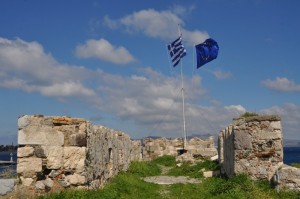 |
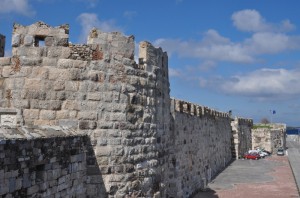 |
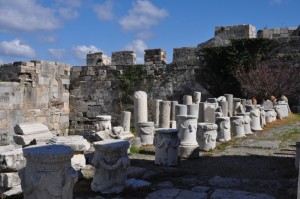 |
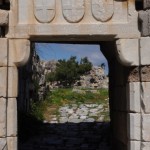 |
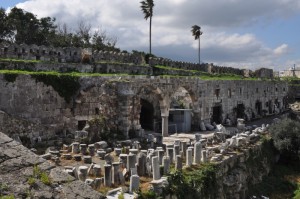 |
I paid €4 to visit the Castle of Kos a fortified site in antiquity and during the Byzantine times. The present form of the castle is due mainly to the Knights of the Order of St John of Jerusalem (the Knights) who captured the island in 1314 and held it till 1522 when it fell to the Turks. It was built in two phases i.e. the inner rectangular enceinte (14th c) and the outer enceinte (1495-1514). It is a superb example of their defence architecture and the most imposing monument in the city standing at the entrance of the harbour. Until the beginning of the 20th century, the site of the castle was an island and was connected with the main island by a bridge.
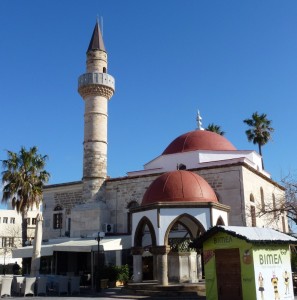 |
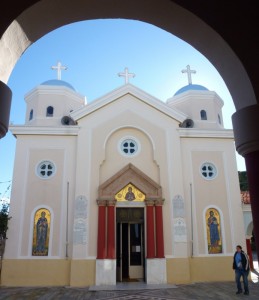 |
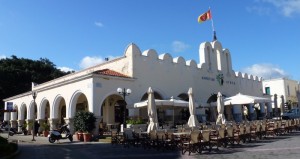 |
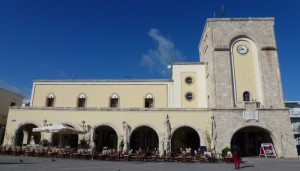 |
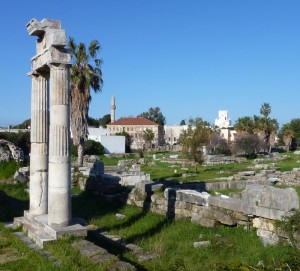 |
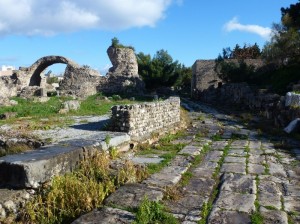 |
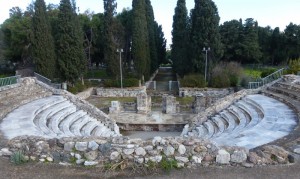 |
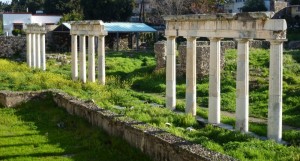 |
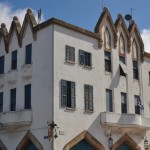 |
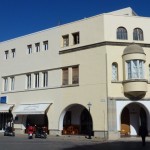 |
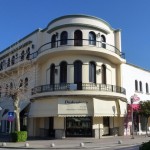 |
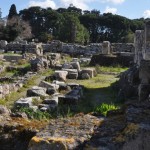 |
There is a nice blend of the Mediterranean, Greek, Moorish, Turkish and Arabic architectures in the old city. The white Town Hall with a clock, the Castle, the Plane Tree of Hippocrates, the Eleftherias Square with a market, the Hat Ji-Hasan Mosque, St Paraskevi Church, shops and cafes look picturesque and harmonious next to the remnants of the ruins of the Agora and an ancient Roman city.
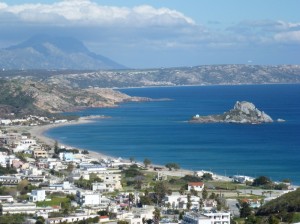 |
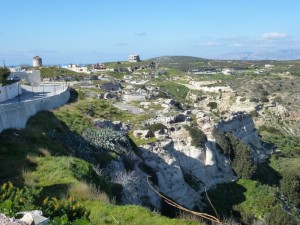 |
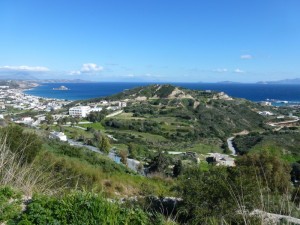 |
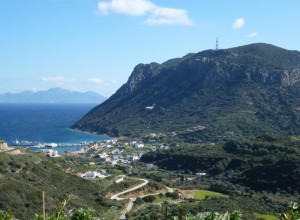 |
The bus service is very poor on the island. In order to see other parts of the island, I had to take a bus to Kefalos which boasts beautiful beaches on the southwest coast. There are only two buses a day (i.e. 7am and1pm). I had a grilled fresh fish for €4 while waiting for the bus. The journey took an hour and I had 30 minutes to take a quick look at the sleepy town before taking the 2:30pm bus back to Kos. I am not impressed by the scenery.
I was hungry and found a Chinese restaurant nearby (probably the only one on the island). The rice fried noodles (€7.5) were surprisingly authentic and delicious!
March 1 Friday: Kos
I planned to visit the Asklepieion (or sanctuary of Asklepios) located 3.5 km from the town centre. I had no plan to hike but I ended up walking some 20km.
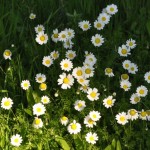 |
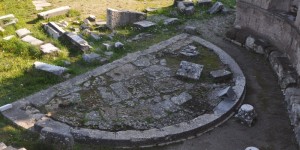 |
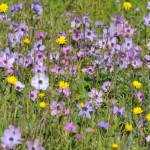 |
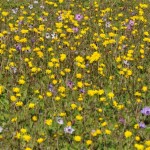 |
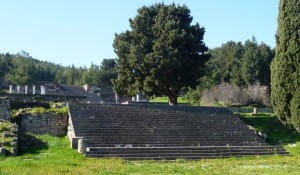 |
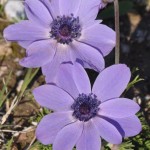 |
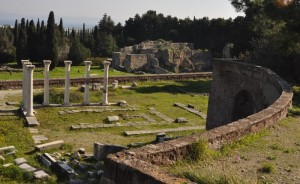 |
The Asklepieion built on gentle slopes on four different terraces and united by a marble staircase in the 4th century BC, became famous as the leading hospital in antiquity. It is known world-wide as the centre of Hippocrates’ Medical School and it was here that the Hippocratic Oath was first told, a tradition that has been repeated thousands of times each time a new doctor takes his/her oath. The sanctuary had been destroyed by an earthquake and was long forgotten till German archaeologist Rudolf Herzog discovered the site in 1902. It is now the most famous monument on Kos with fantastic view over the sea and the coast Asia Minor opposite.
I arrived at this remarkable archaeological site before 9am and was ready to leave at 10am. I decided to walk to Zia (285m) a picturesque village located at the foothill of Mount Dikeos as there was no bus till 1pm. I followed a paved road and reached Zia (9km) in less than two hours. The whole area is peaceful and green with pine and olive trees and cypress.
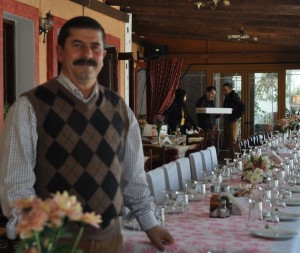 |
I arrived in Zia before noon and the last bus would be leaving at 1:30pm. The village looked lifeless and empty with all shops and cafes closed. The Taverna Olympia was the only restaurant open as it had a wedding banquet that afternoon. I had a wonderful lunch with all types of Greek hot starters and a glass of local wine for €10. I cannot forget the vine leaves which melt in my mouth! From Zia, one can take a 4-hour/7-km hike to Mount Dikeos (875m). I love to do it but am too afraid to go alone: I might fall and get hurt as it is rocky and looks steep at the top.As the bus had not arrived yet, I walked to a roof top garden to take a picture. I saw the bus coming but when I got down, it’s gone. I was furious as it should not leave before the scheduled time. There’s no more bus for the day and I had to walk to the main road which might take 45 minutes. I decided to hitch-hike. A truck stopped and I got off at the main road at Zipari. But there’s no bus on the main road till 3pm! There’s nothing to do. So I walked all the way back to the city (another 9km). It is unpleasant and noisy walk as there are too many cars on the road. I should have simply taken the same mountain route back!
I passed a local eatery and saw a suckling pig on the grill. Two hours later, I returned to buy a take-away dinner (€8) with pork, salad and rice. One can sample delicious Greek food if one goes to the right place!
 |
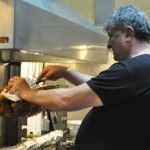 |


